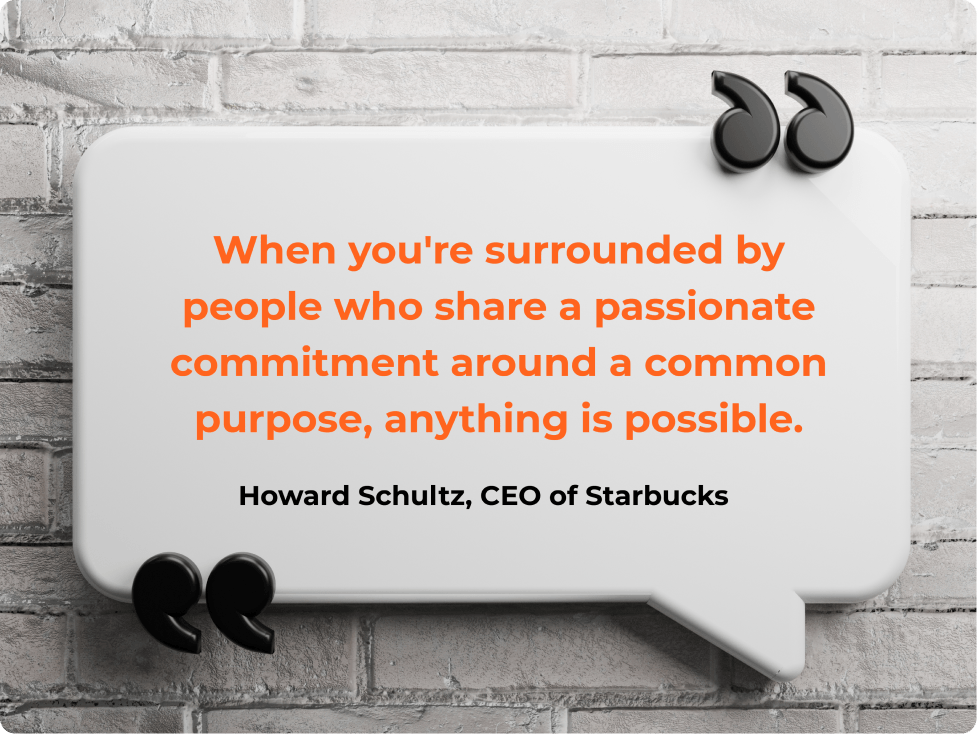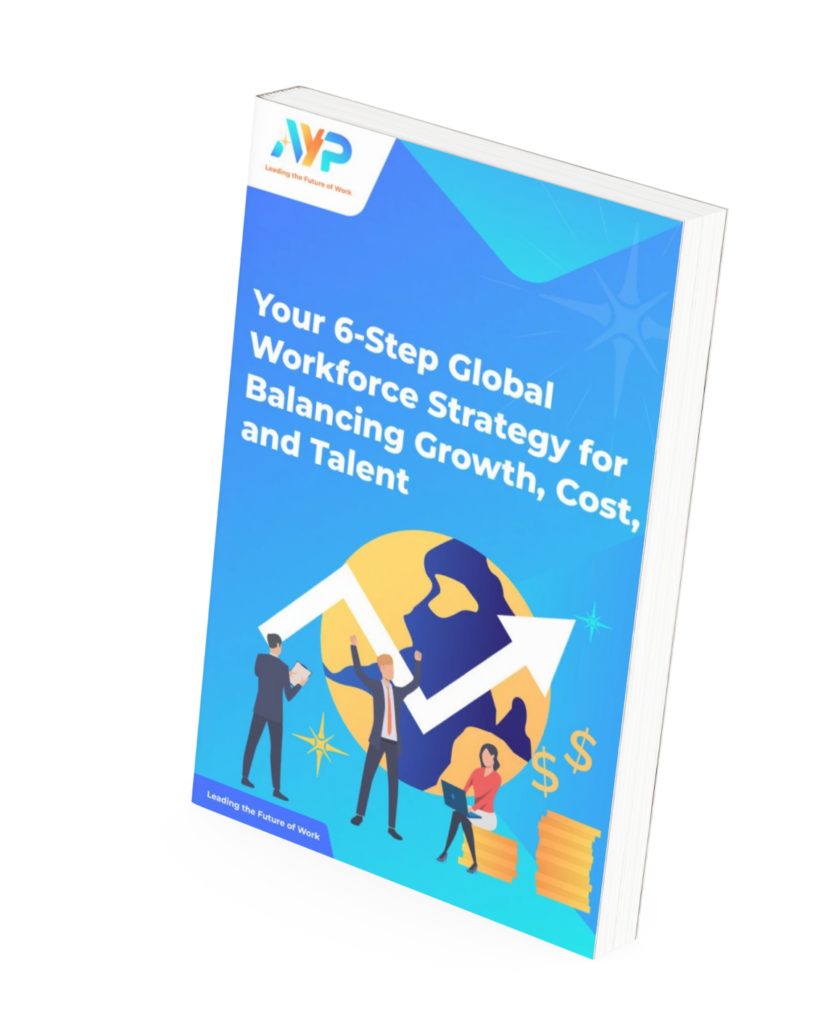Many organizations regard employee engagement as an HR focus. HR professionals are typically responsible for developing and implementing employee engagement strategies.
Most HR professionals view employee engagement as a by-product of effective communication. Therefore, HR efforts prioritize creating a positive workplace culture and aspire to provide work-life balance initiatives and programs to gain employees' job satisfaction.
Gallup's Global Workplace 2022 research shows that actively disengaged workers caused a total loss of $7.8 trillion in productivity, equalling 11% of the global GDP 1.
Generally, disengaged employees cost the company approximately 18% of the employee's annual salary. Hence, in terms of the average loss cost, a business will lose $2,246 for every disengaged employee.
Traditionally, the definition of work is associated with labour and the exchange of money or compensation. However, a rewarding career now is beyond monetary rewards.
Work is now seen as a means of achieving personal fulfillment, especially when employees perceive that they can utilize their unique skills or abilities to benefit the economy and society.
Since employee engagement significantly affects the company's earnings, employee engagement strategies should be part of the overall business strategy.
HR professionals should work proactively and closely with the management and stakeholders to identify how to increase employee engagement efforts.
Some primary focus areas will be fostering a positive work culture by paying attention to employee experiences. In such a way, preventing long-term losses by reducing employee retention.
How to improve employee engagement in 6 ways:
Step 1: Identify Human-Centric Employee Value Proposition
Gartner has identified 5 areas of human-centric metrics that effective employee engagement strategies should include (3):
- Establish deeper connections by understanding employees' needs.
- Give autonomy to employees to perform their work: Not just demand when and how to complete it.
- Empower employees' growth as a human: Not just professionals.
- To care for employees' holistic well-being.
- Communicate a shared purpose by collecting feedback: Not just giving top-down statements.

Step 2: Measuring Your Employee Engagement Level
Understanding the fundamentals from the EVP stated above isn't sufficient for your further implementation to create an engaged workforce.
Every organization is unique in facing the challenge of improving employee engagement. Therefore, conducting employee engagement surveys on an ongoing basis helps to discover your major obstacle in achieving an ideal engaging culture.
One of the easy to implement and measurable surveys is the pulse survey. It is typically shorter and straightforward, suitable for employees with a hectic schedule to complete quickly.
Pulse survey lets organizations get a real-time snapshot of employees' feelings. It allows organizations to track progress over time and evaluate if the employee engagement strategies are working and how employees respond to the implemented efforts.
Some of the sample questions 2 measuring employee engagement are:
- I share strong connections with my colleagues.
- I am empowered to direct the course of most of my work life.
- I leave work with a sense of achievement on most days.
- I feel energized at work.
- I think about the company's values in all that I do.
- We celebrate individual humanity.
- I can express my creativity at work.
The questions are pretty similar and align with the employee value proposition suggested by Gartner measuring:
- Connections, autonomy, empowering growth, employees' well-being, and aligning shared purpose.
As a result, the HR team can continue strengthening those performing areas and work more diligently in areas that need improvement.
Step 3: Define & Align Your Shared Purposes
A common misconception of shared purpose is organizational mission and vision. A vision usually envisions the future outlook of your organization and inspires your employees to achieve.
A mission, on the other hand, describes what your company is doing and what ambitious goals are your company working on to achieve the vision.
As an employee, you do not just want to work according to a set of policies, SOPs, and rules and become a policy follower, agree?
Shared Purpose: Make your people believe "why" they should work with you.
Once your business is formed by a solid set of purpose, values and steps to achieve it, it fosters positive employee-employer and team relationships. Why does this happen?
The first reason is that your shared values inspire and attract individuals with similar mindsets to join your company as they aspire to achieve the same goals in their career path. Secondly, it instills a sense of purpose in your employees and encourages employees to bring in more energy and passion for working.
Once you've identified your values, the difficult part is living by example. Have your leaders model these values and frequently communicate via group sharing how these goals motivate them and how they envision themselves after a year.
Only actively holding yourself accountable to these values and demonstrating them empowers your people to be engaged at work like you as they perceive their contributions as meaningful.

Step 4: Prioritize People and Emotions
Above all, your people are the heart of your company. Employees who feel devalued will be less likely to form a positive emotional connection to the organization.
The management team will need to have an understanding of this concept. Unfortunately, most leaders rationally manage the team by merely cascading tasks down accompanied by the desired result to achieve in a specific timeline.
Human beings are emotional creatures. Studies reveal that emotional factors influence 70% of our decisions, and only 30% depend on rational evaluations 3.
Success in establishing a long-lasting relationship with a person or a company relies on emotional factors instead of logical reasoning.
Controlling, lack of understanding and empathy, delegating strict SOPs and tight deadlines regardless of employees' emotions, and refusing to listen to employees' struggles and concerns are gradually inviting talents to seek alternatives elsewhere.
According to Forbes, 67% of the employees in the workforce are categorized as "not engaged". They invest minimum effort in their work and are not concerned about the company's goals, directions, and values. However, they serve as a threat and opportunity to the company, and it is possible to engage and transform them into "engaged employees".
Recruitment efforts often focus on spending efforts to hire high-profile candidates; however, once the talents are onboard, efforts stop. No matter how great or attractive the invite was, people will ultimately leave unless given a clear career path or meaningful role where they can see the value of contributing.
Step 5: Creating Programs According to Your Employee's Interests.
"When your employees are happy working with you, you will see the productivity boost significantly over time"
We have seen that Gartner has mentioned employee value proposition; employee engagement revolves around empowering employees to grow and love what they do.
How can we establish connections according to employees' needs and take care of their well-being?
Here are a few suggestions:
- If health concerns are a priority to your employee, provide health screening subsidies and even give them a half day off to visit the health screening center, this shows that you value their health condition as an employer.
- Health and nutrition seminars.
- Bakery sessions for passionate bakers.
- Fitness programs for fitness enthusiasts.
- Discounted cinema tickets for movie lovers.
- Set up a financial management discussion group for people passionate about accumulating wealth.
The rule of thumb is to be flexible according to your employee's interests and hobbies from the survey results. Employees will eventually feel the efforts you have put in and will then work harder to reciprocate your appreciation.
A wise leader knows how to treat people with respect, dignity and equality. Team members are highly devoted to a team when they feel included, valued, and encouraged to be who they are. Take the lead and be the leader you wish you had.
Subscribe For Exclusive Updates!
Become an insider in the fast-paced world of HR. AYP Monthly Digest delivers the latest trends, insights, and expert advice directly to your inbox, making you a VIP in the know

Step 6: Get Help to Understand Your Barriers to Success
If your company suffers from low productivity and a high turnover, your employees are subtly telling you that they are unhappy and that something is wrong along the way.
It can be even challenging for companies aiming to expand overseas and hiring from anywhere when diversity and inclusion become vital to managing your global workforce.
Fortunately, AYP Group's PEO & EOR professionals are experts in different in-country rules and regulations.
With a proven track record in boosting employee engagement across Asia Pacific, your business and your people are in safe hands with us.
- We help employers build business presences abroad without incorporating legal entities.
- Facilitate a smooth onboarding process for your global team in minutes.
- A single dashboard solution that simplifies your HR processes
- Save up to 60% on hiring costs, compensation, and insurance.
- Improve your Diversity and inclusion score with HR digital strategies.
- Pay out more than 130+ payroll currencies according to the countries' labor laws.
- 100+ cross-country legal experts to mitigate your compliance risk.
Get a FREE consultation with us on your business plan to see how we can help you further!
Featured Content
1. 5 Hot Tips to Stop Employee Burnout Before It Starts
2. Why Analytics Matter With Diversity and Inclusion
3. Diversity & Inclusion is a Must in the Workplace



